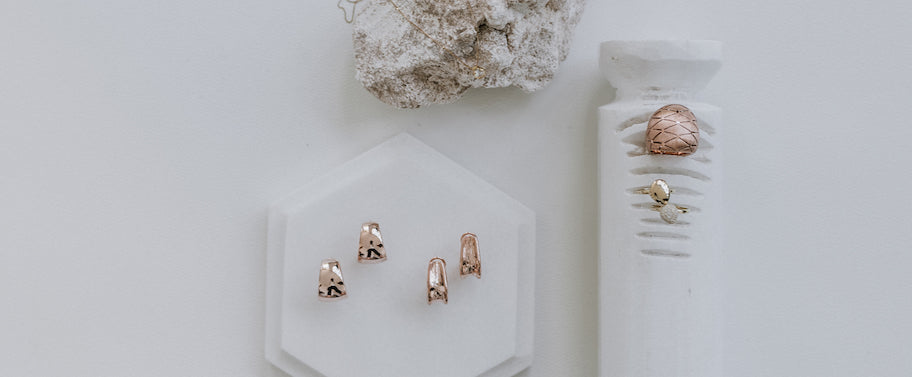Rings are one of the pieces of jewelry most loaded with meaning, from pinky rings to wedding bands, they are a special way of showing and sharing our love, they are a sweet reminder that accompanies us every day and that is why it is worth the worth knowing them. We want to introduce you to the types of settings used in rings with stones.
Setting or mounting is the way in which gems are fixed or mounted on a piece of metal, that is, how they are placed and attached to it. They are designed to highlight the natural beauty of gems and there are various types with different aesthetic purposes or results, we show you some.
Shared prong setting
A setting used for larger gems, it allows light to enter each one of them, enhancing the brilliance. This is because each stone shares a set of prongs that minimizes the use of metal but keeps them equally secure and in place.
Scallop setting
The metal holding each stone has U-shaped cuts on the sides of the band, adding a distinctive design element.
It is the most traditional type of mounting, also called brilliant mounting. The gems appear to be held by two metal bars. It is popular for its vintage aesthetic.
Delicate french V split
For this setting, small V-shaped slots are cut to place the gems in the metal. Try to use as little metal as possible so that the rings look like solid gems and let in more light.
Coming from French, this word means pavement, this type of setting seeks precisely to create a “paved” surface of gems, all small and the same size. They are placed in holes in the metal and share nails with each other.
Surface extension setting
One of the most popular settings, the gems are placed in a metal base with nails on top to hold them, these can be round, flat, or V-shaped.
Fishtail setting
One of the safest and most popular settings, in this one, the gems are mounted in the same metal, which is cut in such a way that the top looks like the tail of a fish.
By having a better knowledge of our jewelry, we can make better decisions when purchasing it and we can also give it better maintenance so that it becomes part of our history.

